PEARSON (PEARSON) • Forensic and Criminal Investigation
Latest uploads for Forensic and Criminal Investigation at PEARSON (PEARSON). Looking for Forensic and Criminal Investigation notes at PEARSON (PEARSON)? We have lots of notes, study guides and study notes available for Forensic and Criminal Investigation at PEARSON (PEARSON).
-
260
- 0
-
49
Courses Forensic and Criminal Investigation at PEARSON (PEARSON)
Notes available for the following courses of Forensic and Criminal Investigation at PEARSON (PEARSON)
-
Forensic and Criminal Investigation 3
-
Unit 1 - Principles and Applications of Science 1
-
Unit 10 - Forensic Fire Investigation 13
-
Unit 11 - Forensic Traffic Collision Investigation 19
-
Unit 12 - Forensic Photography 2
-
Unit 13 - Forensic Genetics 2506 8
-
Unit 14 - Forensic Anthropology and Archaeology 18
-
Unit 15 - Practical Chemical Analysis 4
-
Unit 16 - Microbiology and Microbiological Techniques 6
-
Unit 2 - Practical Scientific Procedures and Techniques 44
-
Unit 3 - Science Investigation Skills 1
-
Unit 4 - Forensic Investigation Procedures in Practice 2506 38
-
Unit 5 - Applications of Criminology 14
-
Unit 5 Applications of Criminology 2
-
Unit 6 - Criminal Investigation Procedures in Practice 27
-
Unit 7 - Applications of Criminal and Forensic Psychology 17
-
Unit 8 - Physiology of Human Body Systems 30
-
Unit 9 - Environmental Forensics 13
Popular books PEARSON (PEARSON) • Forensic and Criminal Investigation
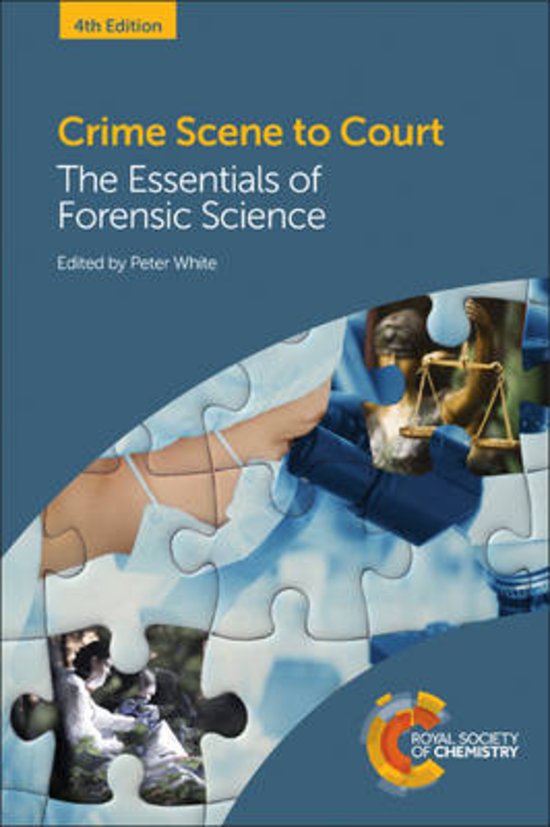
ISBN 9781782624462
Latest notes & summaries PEARSON (PEARSON) • Forensic and Criminal Investigation
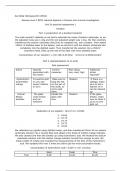
This is an in-depth assignment that describes how to prepare and standardise solutions for titration and colorimetry, investigate the concentration of unknown solutions, using procedures and techniques in titration and colorimetry, and skilful applications of procedures and techniques in titration and colorimetry to accurately determine the concentration of solutions.
- Package deal
- Other
- • 5 pages's •
-
PEARSON•Unit 2 - Practical Scientific Procedures and Techniques
-
Unit 2• Byzoebellahollingsworth
Preview 2 out of 5 pages
This is an in-depth assignment that describes how to prepare and standardise solutions for titration and colorimetry, investigate the concentration of unknown solutions, using procedures and techniques in titration and colorimetry, and skilful applications of procedures and techniques in titration and colorimetry to accurately determine the concentration of solutions.
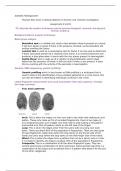
This is an in depth assignment discussing the analytic techniques used to examine biological, chemical, and physical forensic evidence, the analytic techniques used to examine biological, chemical, and physical forensic evidence, the choice of the analytical techniques used to examine biological, chemical, and physical forensic evidence and an evaluation of the analytical techniques used in forensic science to examine biological, chemical, and physical forensic evidence.
- Package deal
- Other
- • 14 pages's •
-
PEARSON•Unit 4 - Forensic Investigation Procedures in Practice
-
Unit 4• Byzoebellahollingsworth
Preview 2 out of 14 pages
This is an in depth assignment discussing the analytic techniques used to examine biological, chemical, and physical forensic evidence, the analytic techniques used to examine biological, chemical, and physical forensic evidence, the choice of the analytical techniques used to examine biological, chemical, and physical forensic evidence and an evaluation of the analytical techniques used in forensic science to examine biological, chemical, and physical forensic evidence.
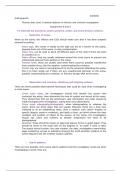
This is an in depth assignment that discusses the procedures used to preserve, collect, and record forensic evidence, appropriate procedures to preserve, collect and record forensic evidence, the choice of procedures used to preserve, collect, and record forensic evidence and the importance of using appropriate procedures to preserve, collect and record forensic evidence.
- Package deal
- Other
- • 13 pages's •
-
PEARSON•Unit 4 - Forensic Investigation Procedures in Practice
-
Unit 4• Byzoebellahollingsworth
Preview 2 out of 13 pages
This is an in depth assignment that discusses the procedures used to preserve, collect, and record forensic evidence, appropriate procedures to preserve, collect and record forensic evidence, the choice of procedures used to preserve, collect, and record forensic evidence and the importance of using appropriate procedures to preserve, collect and record forensic evidence.
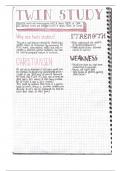
Included is condensed essential information on all the topics that are essential for the Unit 7 exam on applications of criminal and forensic psychology, part of the BTEC Forensic and Criminal Investigation Course. Each page consists of the theory and study that is required for each topic, for both biological and non-biological approaches.
- Summary
- • 15 pages's •
-
PEARSON•Unit 7 - Applications of Criminal and Forensic Psychology
Preview 2 out of 15 pages
Included is condensed essential information on all the topics that are essential for the Unit 7 exam on applications of criminal and forensic psychology, part of the BTEC Forensic and Criminal Investigation Course. Each page consists of the theory and study that is required for each topic, for both biological and non-biological approaches.
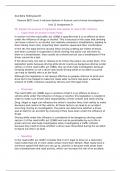
This is an in depth assignment discussing the purpose of legislation that applies to road traffic collisions, the purpose and effectiveness of the legislation that applies to road traffic collisions and the purpose of legislation that applies to road traffic collisions and the criminal justice system, making suggestions for improvements.
- Package deal
- Other
- • 6 pages's •
-
PEARSON•Unit 11 - Forensic Traffic Collision Investigation
-
Unit 11• Byzoebellahollingsworth
Preview 2 out of 6 pages
This is an in depth assignment discussing the purpose of legislation that applies to road traffic collisions, the purpose and effectiveness of the legislation that applies to road traffic collisions and the purpose of legislation that applies to road traffic collisions and the criminal justice system, making suggestions for improvements.
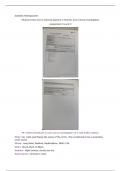
This is an in depth assignment discussing the procedures to carry out an investigation of a road traffic collision, analysing evidence from a simulated collision investigation, the procures and the choice of equipment used to investigate a collision and the procures and the choice of equipment used to investigate a collision.
- Package deal
- Other
- • 8 pages's •
-
PEARSON•Unit 11 - Forensic Traffic Collision Investigation
-
Unit 11• Byzoebellahollingsworth
Preview 2 out of 8 pages
This is an in depth assignment discussing the procedures to carry out an investigation of a road traffic collision, analysing evidence from a simulated collision investigation, the procures and the choice of equipment used to investigate a collision and the procures and the choice of equipment used to investigate a collision.
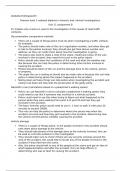
This assignment is an in depth discussion about the science is used in the investigation of the causes of road traffic collisions, the velocity and use the coefficient of friction to determine the speed of vehicles before a collision from collision scenarios, the scientific factors associated with the investigation of road traffic collisions and the interrelationships between scientific factors in determining causes and the effect in road traffic collision investigations.
- Package deal
- Other
- • 7 pages's •
-
PEARSON•Unit 11 - Forensic Traffic Collision Investigation
-
Unit 11• Byzoebellahollingsworth
Preview 2 out of 7 pages
This assignment is an in depth discussion about the science is used in the investigation of the causes of road traffic collisions, the velocity and use the coefficient of friction to determine the speed of vehicles before a collision from collision scenarios, the scientific factors associated with the investigation of road traffic collisions and the interrelationships between scientific factors in determining causes and the effect in road traffic collision investigations.
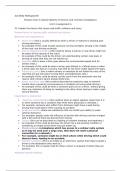
This assignment is an in depth discussion about the factors that cause road traffic collisions and injury, the interrelationship between the factors that cause road traffic collisions and injuries and the significance of the different factors that cause traffic collision and injury.
- Package deal
- Other
- • 7 pages's •
-
PEARSON•Unit 11 - Forensic Traffic Collision Investigation
-
Unit 11• Byzoebellahollingsworth
Preview 2 out of 7 pages
This assignment is an in depth discussion about the factors that cause road traffic collisions and injury, the interrelationship between the factors that cause road traffic collisions and injuries and the significance of the different factors that cause traffic collision and injury.

In this in depth assignment it evaluated how dietary diseases can affect human health and what sort of treatments are available to help correct them. It also investigated the symptoms of nutritional deficiency and what treatments people receive to correct the issues. It also analysed the role of digestive enzymes and organs, and where they are located.
- Package deal
- Other
- • 1 pages's •
-
PEARSON•Unit 8 - Physiology of Human Body Systems
-
Unit 8• Byzoebellahollingsworth
Preview 1 out of 1 pages
In this in depth assignment it evaluated how dietary diseases can affect human health and what sort of treatments are available to help correct them. It also investigated the symptoms of nutritional deficiency and what treatments people receive to correct the issues. It also analysed the role of digestive enzymes and organs, and where they are located.

This is an in depth assignment that discuses the gross anatomy and function of the organs of the lymphatic system, the physiological reasoning for corrective treatments associated with a disorder of the lymphatic system, and the effect of corrective treatments for the disorders of the lymphatic system.
- Package deal
- Other
- • 1 pages's •
-
PEARSON•Unit 8 - Physiology of Human Body Systems
-
Unit 8• Byzoebellahollingsworth
Preview 1 out of 1 pages
This is an in depth assignment that discuses the gross anatomy and function of the organs of the lymphatic system, the physiological reasoning for corrective treatments associated with a disorder of the lymphatic system, and the effect of corrective treatments for the disorders of the lymphatic system.
